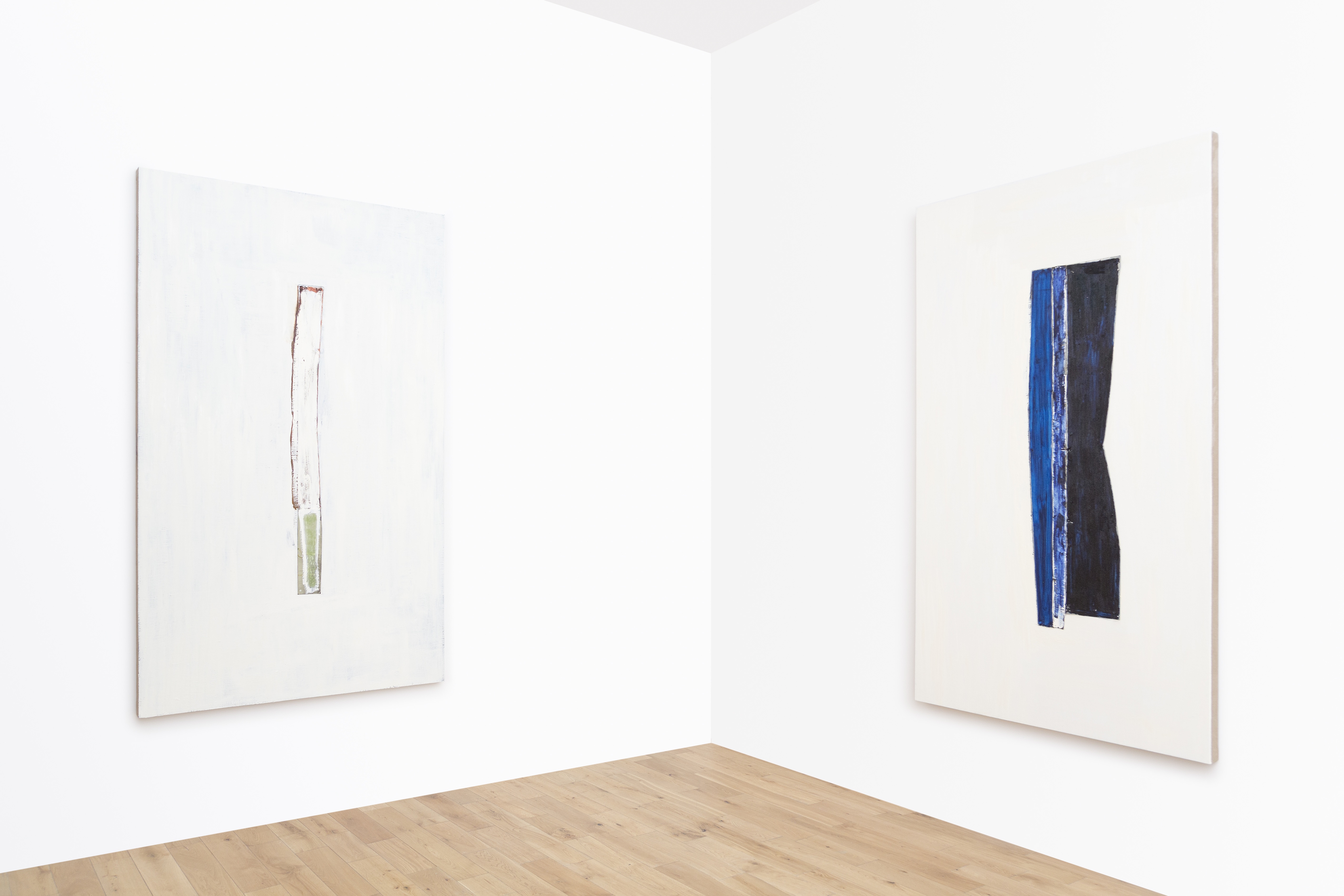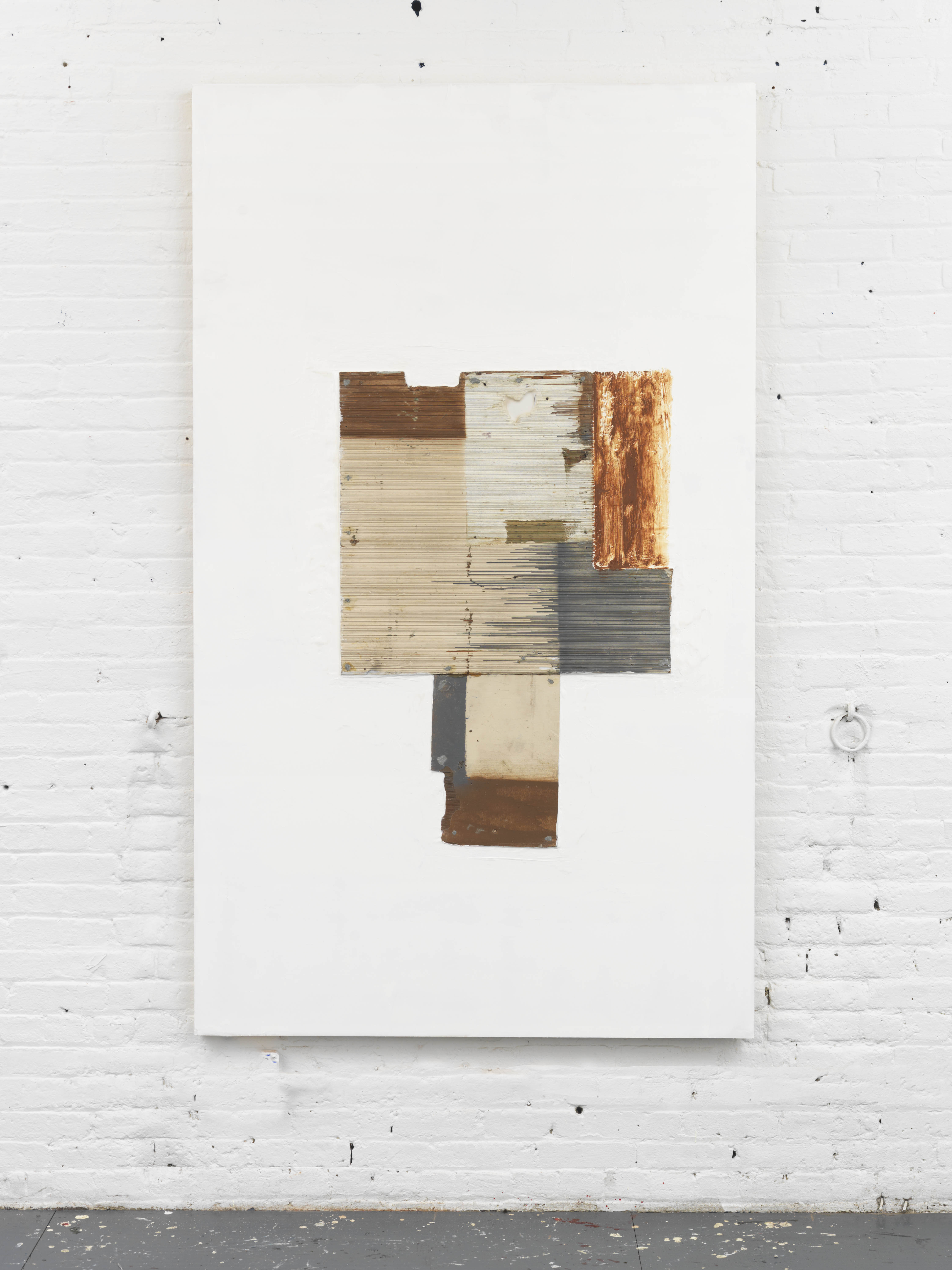
Erik Lindman, Untitled, 2016 Found Surfaces (Wood, Paint) Oil and Acrylic on Panel 198,12 x 116,84 cm 78 x 46 inches
Can you tell me a bit about Metal Paintings?
These paintings are a continuation of my work with anonymous found surfaces. As I’ve become increasingly interested in paint itself as a material, my engagement with found surfaces has evolved. The absorbency, luminosity and superficial variation of the found surfaces inform how paint, when applied over and around these found surfaces, is experienced. There is a subtly startling way in which light moves through oil paint and reflects off of the found metallic surfaces and the painted grounds in which the metal surfaces are embedded. The paint and the surfaces fully complement each other, visually and materially. I’ve found this synergistic relationship very productive.
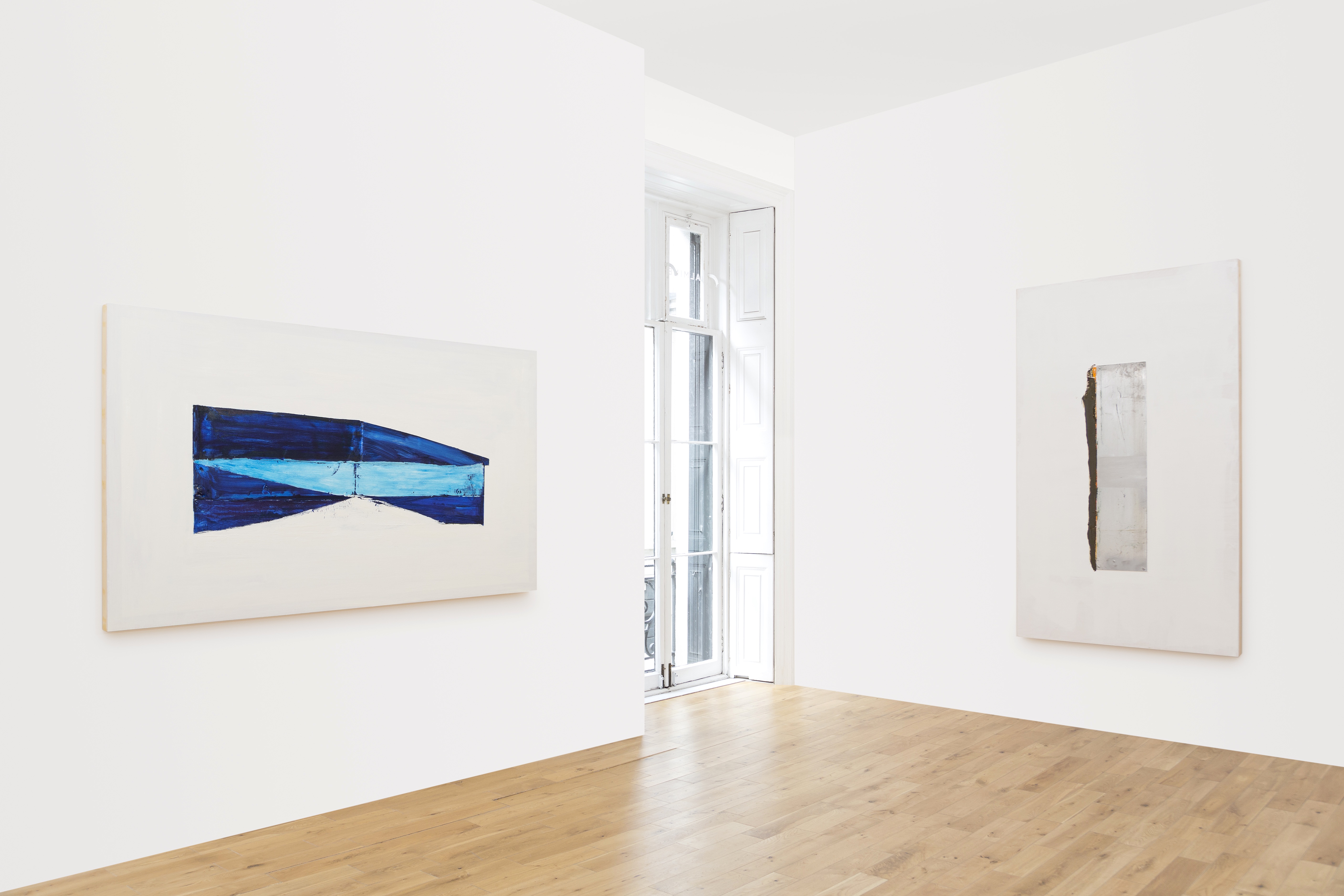
Erik Lindman, View of the exhibition ‘Metal Paintings’, Almine Rech Gallery, London, 12.09 – 05.11.2016. Courtesy of the Artist and Almine Rech Gallery. Photo: Melissa Castro Duarte
You’re working with found materials for these works. Are you quite methodical in your search for these items, do you tend to know exactly what you’re looking for?
I have never gone out with the specific intention of finding materials. I have certain interests, formally linked to a historical language of abstraction, that inform what surfaces catch my eye. The surfaces I use tend to just appear when I need them! A painting develops from the specific surface itself.
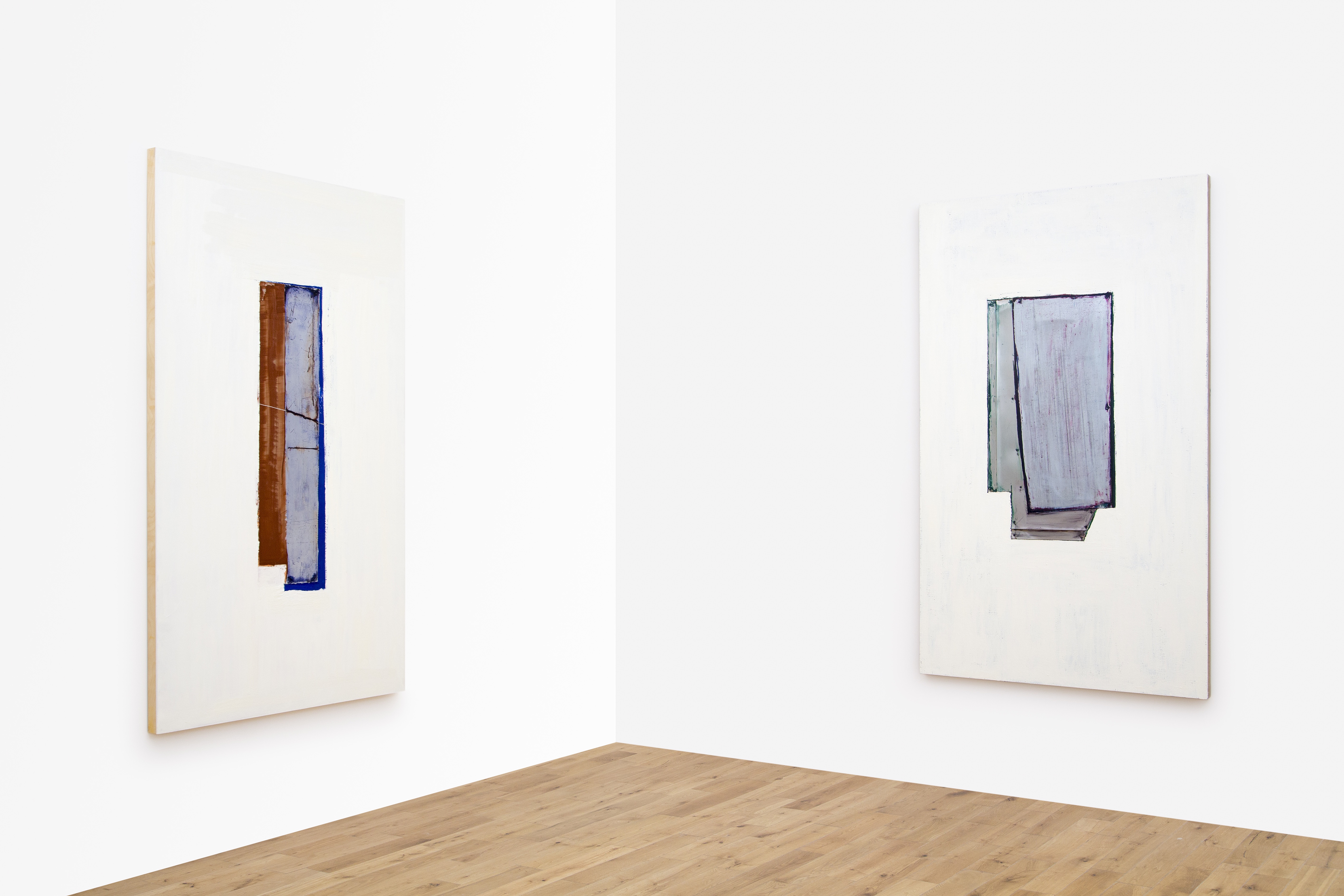
Erik Lindman, View of the exhibition ‘Metal Paintings’, Almine Rech Gallery, London, 12.09 – 05.11.2016. Courtesy of the Artist and Almine Rech Gallery. Photo: Melissa Castro Duarte
There’s an element of disguise in the works; which switch between high end and everyday materiality, and often hide their true surface. Do you hope for those who encounter them to feel a sense of uncertainty?
Yes, these paintings embrace a liminal space — both in their materiality and even in their status as ‘paintings’. The experience of assumptions falling away through a process of personal engagement with the painting is an important part of the work. This process itself is where I feel the power of painting resides. To stop and consider an object, to contemplate, creates space within a certain ‘thinness’ of contemporary visual and material culture.
How have ideas of abstraction changed for you since you began making work?
When I began making paintings, I didn’t believe it was possible to make a painting. I understood a physical painting as a prop in the artist’s arsenal to use while performing the role of the painter. I’ve since experienced this hyper self-awareness as unproductive. I’ve moved from seeing abstraction as an emptied-out, historically determined visual language towards an open engagement with making. I don’t think about abstraction as such, but about art in a broader sense.
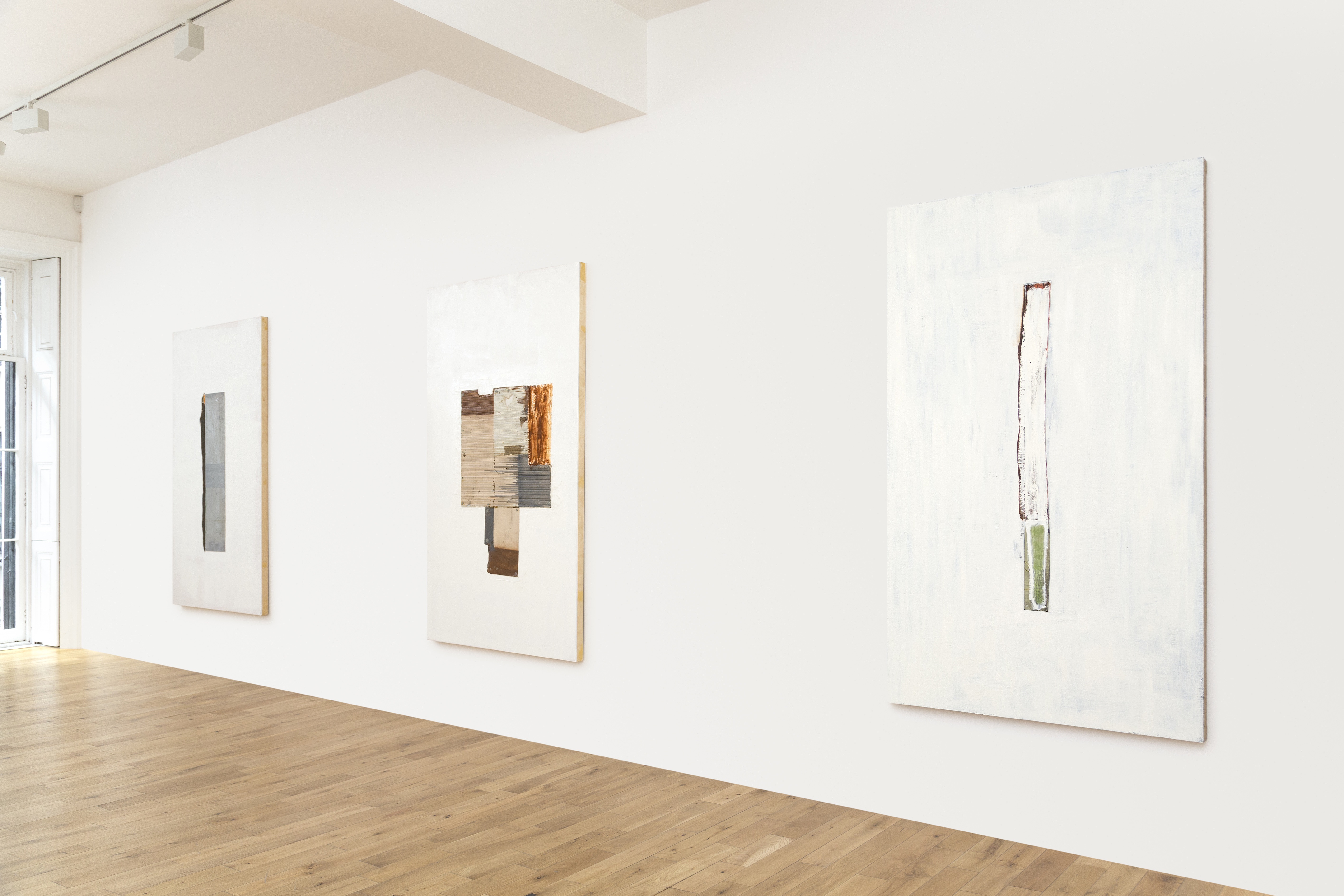
You’ve chosen some very electric blues and turquoises on this body of work. Do you find the materials lead your colour decisions or is that a choice much earlier in the process?
Colour- hue- is just one aspect of paint. As a material, each pigment has highly distinct physical qualities. A Pthalo blue, for instance, is very transparent, chemical, and overwhelming in its infectious tinting strength due to its small particle size. Cobalt blue, on the other hand, is a dense, solid, mineral — it’s linked in my eyes to a history of using precious materials to describe elevated spiritual characteristics of painted subjects, akin to the use of Lapis in the painting of reliquary images. Indanthrone blue is interesting to me as its particle size is largely determined by the auto industry as its used in many commercial applications. So colour choice, what oil paint to use or to grind myself, is a decision based on the surface and the overall presence of the painting itself as an image-object. Should the paint leave visible or obscure what’s beneath it? How can the paint help make visible what I see in the found surface?
‘Metal Paintings‘ is showing at Almine Rech Gallery until 5 November
